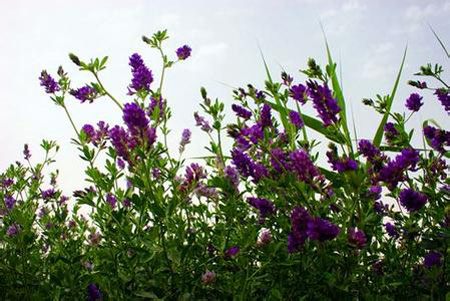Alfalfa Ecological Fertilization Technology

Soil fertility has different high, medium and low conditions, so there is a difference in the amount of fertilization. Generally, the plot with low soil fertility is 600-800 kilograms per mu. It is recommended to use 600-800 kg of organic fertilizer decomposed and fermented per mu, 6 kg of urea, 17-22 kg of diammonium phosphate, and 9 kg of potassium chloride. Gold baby microbial fertilizer 3-4 kg. For soils with moderate soil fertility, with a yield of 800-1000 kg per mu, it is recommended that 750-1000 kg of fermented organic fertilizer, 6 kg of urea, 15-20 kg of diammonium phosphate, 7 kg of potassium chloride, and golden treasure microorganism be applied per acre. Fertilizer 2-3 kg. The plots with high soil fertility and 1000-1200 kg per mu are recommended to use 500-750 kg of rotten organic fertilizer, 4 kg of urea, 13-17 kg of diammonium phosphate, 6 kg of potassium chloride, and 3 million kg of microbial fertilizer. 1-2 kg. Because unfamiliar fresh feces contain bacteria, eggs can easily transmit parasitic viruses or disease transmission to the roots of plants, cause root diseases, and have low nutrient utilization, it is recommended that growers are advised to pass fresh feces through the microorganisms of the Golden Baby. The starter (for details, click here) is fermented and fermented so that not only the odor, bacteria, and eggs in the material can be removed, but also the organic nutrients in the material can be fully released, which improves the utilization of fertilizer and reduces fertilization. Cost, increased economic efficiency.
Second, top dressing.The entire growth cycle of earthworms requires high nitrogen fertilizers, but nitrogen and potassium fertilizers are added at the same time after each cutting, which is beneficial to the simultaneous growth of the leaves and stems on the ground. Potassium can promote up-conduction of cytokinin and promote the growth of the aerial parts. Practice has shown that application of potash fertilizer can extend the growth period, and increase production by more than 10%. According to the level of soil fertility, the topdressing amount is also different. Usually recommended for low-yielding fields is 4-5 kg ​​of urea, 4-5 kg ​​of potassium chloride, 1-2 kg of microbial fertilizer for each mus, and 3-4 kg of urea is recommended for mid-production fields. 5 kilograms, 1-2 kilograms of gold babe microbial fertilizer, high-yield field recommended 3-5 kg ​​of urea per acre, potassium chloride 3-4 kg, 1-2 kg of microbial microbial fertilizer.
Both the base fertilizer and the topdressing fertilizer are combined with the application of the microbial fertilizer of the golden treasure because the complex microbial flora in the golden treasure microbial fertilizer can be propagated in an appropriate soil environment and produce natural hormones such as cytokinins and indoleacetic acid. By adjusting the pH of the soil and increasing the absorption capacity of the root system, it can also release trace elements in deep soil layers, increase the content of organic matter, effectively improve the soil structure, promote the formation of soil aggregate structure, and make the soil more and more fertile.
In addition, organic fertilizers that have been fermented and fermented by the golden manure fermentation agent will not produce “burnt roots†or “burnt seedlings†when applied to the soil. Moreover, organic fertilizers are rich in organic matter and beneficial microorganisms, which can effectively promote soil aggregates. The formation of structures significantly improves the micro-ecological environment of the soil, enhances the permeability of the soil, preserves water and fertility, and increases the potential for sustainable production and income increase. Details can be consulted: Beijing Huaxia Kangyuan Technology Co., Ltd. telephone toll-free hotline
Recommended reading:
1, yam high yield fertilization technology
2, melon planting and fertilization management
Single Hand Crutches,Aluminum Crutches,Adult Aluminum Crutches,Medical Crutches
Hebei Dingli Medical Apparatus and Instrument Co., LTD , https://www.dinglimed.com